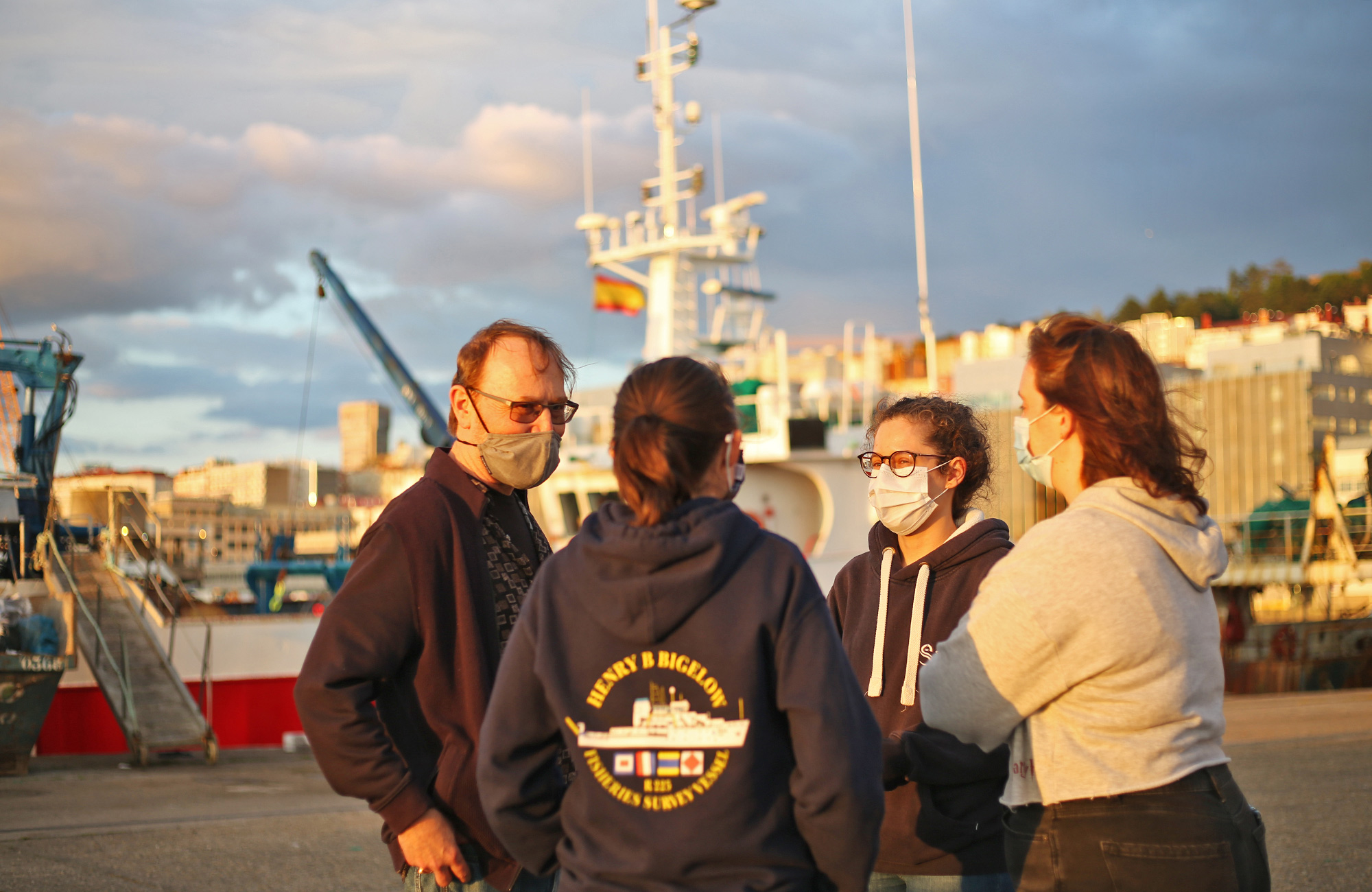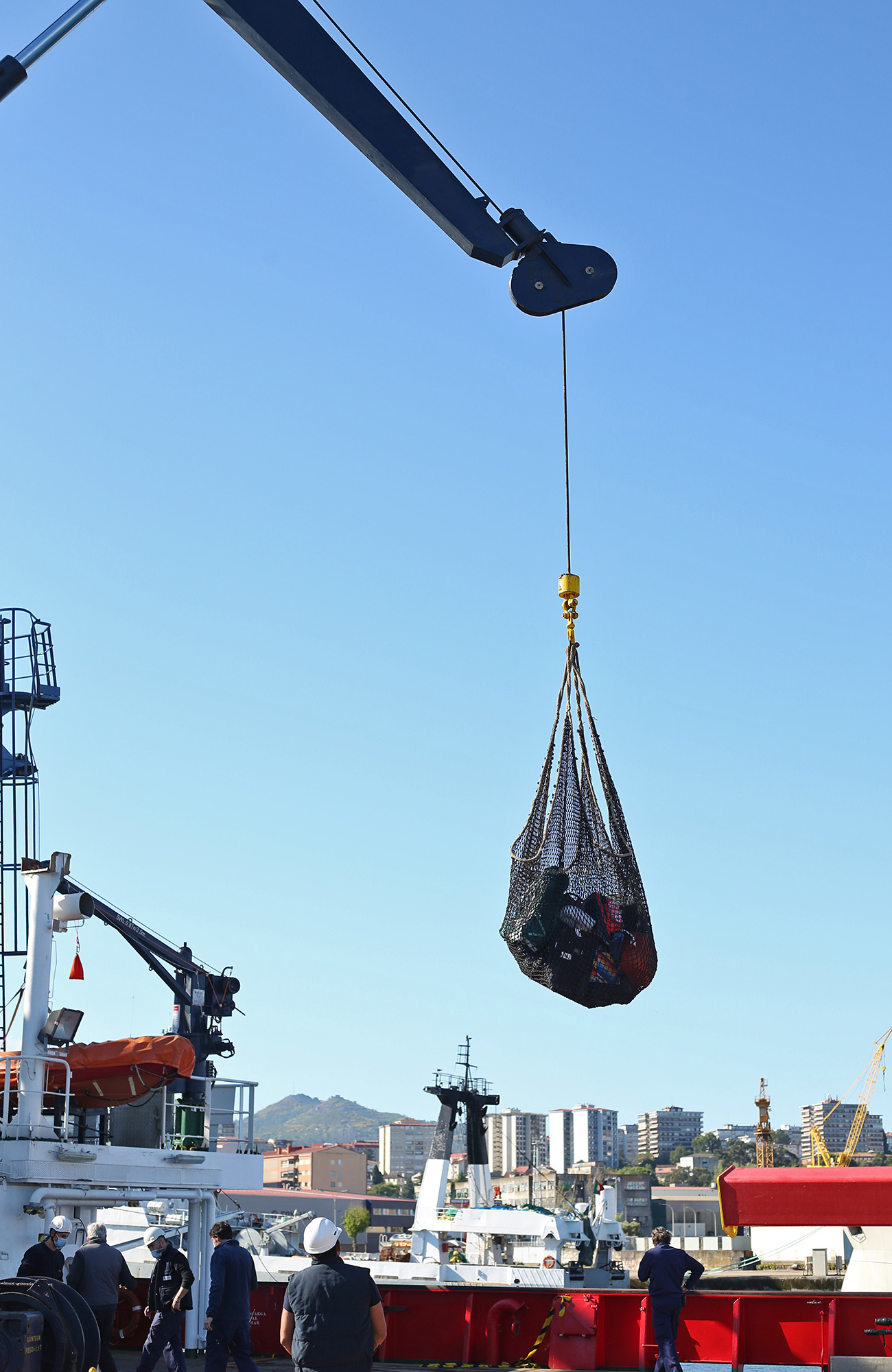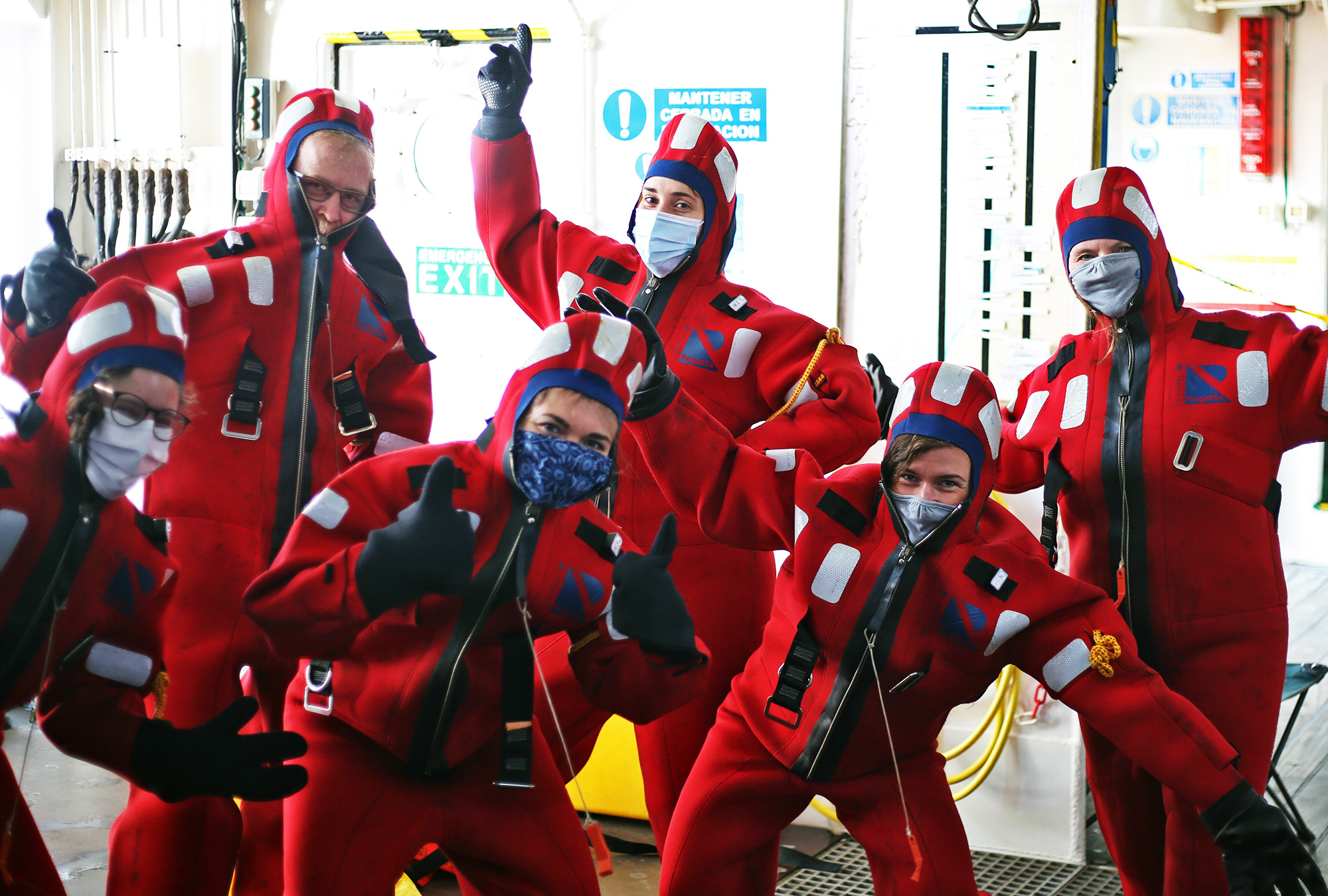Day 1: The Journey so far
By Marley Parker
As we finish unpacking and organizing our gear, it’s hard to believe we boarded the Sarmiento de Gamboa just three days ago. The large research vessel is already starting to feel like home.
Our journey began 18 days ago when most of the science team took an overnight flight from Boston Logan International Airport to Lisbon, Portugal, then boarded a bus to Vigo, Spain.
After traveling for 24 hours, across three countries and six time zones, we finally arrived at Hotel Bahía de Vigo—our quarantine home for two weeks.
COVID-19 mitigation protocols required us to stay in individual hotel rooms, but we found creative ways to connect and engage with each other. Through WhatsApp, 19 of us exchanged hundreds of messages about grocery deliveries, Spanish customs, the views from our hotel rooms, COVID protocols, laundry, internet issues—and most important, plans for our upcoming expedition.
Many team members spent the quarantine period working, using the hotel’s internet to send emails and participate in meetings over Zoom. Cristina García Fernández completed several pages of her PhD thesis. Jackson Sugar wrote code to track some of the instruments he and other scientists will deploy from the ship. Michelle Cusolito and I interviewed several members of the science team.
After five days, we ventured out of the hotel for the first time. We walked roughly half a mile (spaced apart, wearing masks) to the operations office for the Sarmiento de Gamboa. There we received nasal swabs and blood draws to test for the presence of COVID19, as well as antibodies. These tests served as a poignant reminder about how much Woods Hole Oceanographic Institution and the Sarmiento de Gamboa crew value the health and safety of the entire expedition team. As co-lead scientist Heidi Sosik said, “Nothing is more important than safety.”
That same day, just eight hours later, we each received our test results via e-mail and sent them to co-lead scientist Ken Buesseler. By 9:00 p.m., Ken had messaged the whole group to confirm the news we were all hoping to hear—all of us tested negative.
Nine days later, we did another round of nasal swabs, and once again, we all tested negative. With this good news, we packed our belongings and made our way to the Sarmiento de Gamboa, a 70-meter (230-foot) research vessel. The friendly crew helped us load our luggage and gear, gave us a tour around the ship, and provided a comprehensive run-down on rules, regulations, and safety protocols.
While much of the day felt like the start of any other oceanographic cruise, Ken made an important point during our first official science team meeting:
“I’ve been sailing for over 30 years and I’ve never been a part of an expedition like this one,” he said. “This is an extraordinary opportunity.”
After three years of planning, two weeks of quarantine, four days of mobilization, and countless hours of preparation, we are finally, finally on our way.
And we couldn’t be more excited.









